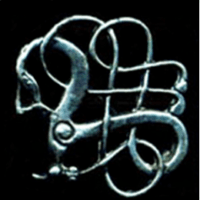About the Project:
Video Credit: Swandro Excavation, Orkney ‘Gateway to the Atlantic’ Project (Playlist, Episode 1) by Swandro-Orkney Coastal Archaeology Trust via YouTube
See more about this excavation, from Orkney.com, via Facebook
Orkney, Gateway to the Atlantic: Latest Posts
Introduction
The Excavations at the Knowe of Swandro, Rousay, Orkney
The multi-period site at the Knowe of Swandro on the west coast of the island of Rousay, Orkney is being destroyed by the sea. Excavation has revealed that the site is a multi-period settlement mound dating from the Iron Age through to the Pictish period and probably to the Viking period and the Westness Viking houses, which we have now shown overlie part of the site.

Location:

The Knowe of Swandro on the Orcadian Island of Rousay, (HY 3753 2966 ), consists of a mound with obvious stone inclusions, which is situated immediately behind a boulder beach on the Bay of Swandro. On its eastern flank is the Norse settlement site known as Westness, excavated by the Norwegian archaeologist Sigrid Kaland in the 1970’s (Kaland 1993).
Described by RCAHMS in 1946 as ‘the much disturbed remains of a stony mound’, this knowe has generally been considered to be the remains of an Iron Age broch.
At the top of the mound a crescent-shaped wall or ridge faces towards the sea, which looked like the disturbed remains of a curving wall, surrounding an area which had large tumbled stones visible in the grass. Ordnance Survey records suggested it had been investigated at some point in the past but there is no published record. The mound may have been disturbed during Radford’s investigation of the nearby Westness Norse houses in the 1950’s or 60’s.
The Project:
As part of the Gateway to the Atlantic Project a number of coastal erosion sites were selected for investigation on the Island of Rousay. Due to the vulnerability of the remains at Swandro, work has concentrated on the investigation of this site. This research builds on the site and landscape studies undertaken at Tofts Ness, Sanday (1984-8 by Dockrill), Old Scatness and Jarlshof (1995-2006) in Shetland by Dockrill & Bond and the Viking Unst (2006-8) project by Bond.
The key research questions for the project are:
- What is the extent of the Iron Age settlement and how does this change over time? The understanding of the Iron Age settlement sequence in cultural and economic terms by the excavation and sampling of these truncated archaeological surfaces will provide a current and informed understanding for people living on Rousay in the Iron Age and how this changes over time.
- What is the stratigraphic association with the Norse settlement and how does this inform on the question of the Pictish/Viking cultural interface? The taking of existing estates by Scandinavian settlers is still a contentious issue in terms of its nature and date. Only with more detailed excavation will it be possible to gain an insight into this important transition on what increasingly seems to be a vital site for this transition period.
- What is the potential of the Chambered Cairn in providing new data to complement the burial monuments excavated previously in Orkney? The site has the potential to establish the relationship of this monument form to the later Iron Age settlement, a phenomenon observed at a number of sites in Orkney, as well as providing an unique opportunity to investigate the construction of the mound due to the erosion.
- The investigation of this eroding site takes place within a research framework, which also demonstrates the relevance of the disappearing record. The long settlement history or “biography” revealed by the erosion enables the study of human behaviour in this particular place through major changes in culture, climate and environment.
This would facilitate the following:
- To provide an understanding of the erosion processes and the archaeological survival and to develop recording methods so as to inform future management of such sites.
- A definition of the extent and nature of the archaeological survival (structural elements and sampling the in situ midden deposits) on the eroding beach with the sampling strategy informing on the economic and environmental exploitation and change, the site’s chronological development and its cultural biography within the archaeological record of Rousay and Orkney as a whole.
Orkney Field Schools
NABO Field Schools at the Knowe of Sandro, Rousay, Orkney
Since 2010 Julie Bond and Steve Dockrill have also run a NABO Fieldschool on Rousay (Orkney), which was a collaboration between University of Bradford, CUNY & Orkney College.
This is part of the Against Time and Tide: Investigating The Iron Age of Orkney project.
The excavations at The Knowe of Swandro include a 5,000-year-old Neolithic chambered tomb, the concentric outer walls of which survive underneath the storm beach, Iron Age roundhouses, Pictish buildings, a Viking settlement and a Norse Long Hall.
The 2018 excavations at Swandro are featured in the BBC Digging for Britain archaeology programme.
NABO Project Links:
Image Credits:
- rousay-field-school: Dr Julie Bond and Dr Steve Dockrill, University of Bradford | All Rights Reserved

















